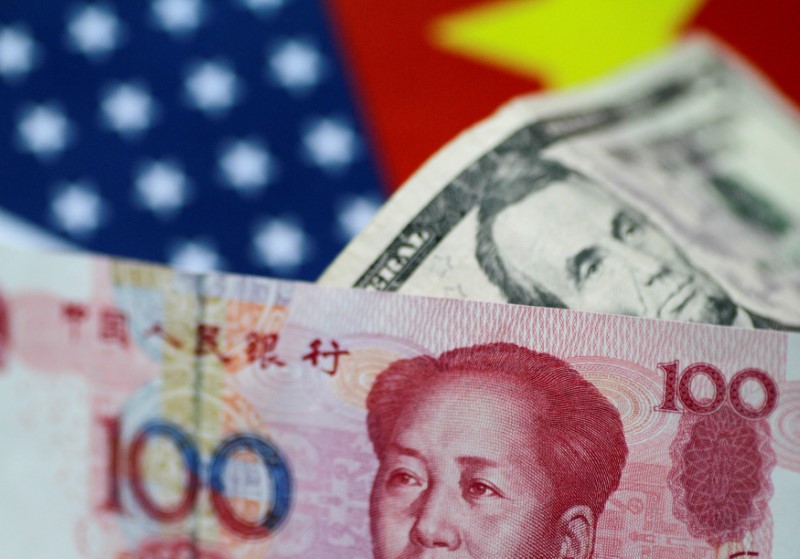Gold bars to be exempt from tariffs, White House clarifies
Investing.com-- Most Asian currencies moved in a flat-to-low range on Thursday, taking only limited relief from U.S. President Donald Trump postponing his plans to impose steep reciprocal tariffs.
But the Chinese yuan touched its weakest level in 17 years, as Trump gave no exemption to China, and hiked his tariffs on the country even further. Chinese inflation data also read weaker-than-expected for March.
The dollar fell in Asian trade, reversing a small overnight rebound even as markets pared back some expectations for a U.S. recession. But the near-term economic outlook remained uncertain, with the minutes of the Federal Reserve’s March meeting showing policymakers on edge over higher inflation and slower growth.
The Japanese yen remained an outlier among its Asian peers, with the USD/JPY pair falling 0.7% and remaining in sight of six-month lows on sustained safe haven demand. The yen was also supported by a stronger-than-expected producer inflation reading for March, which factored into increased bets on more interest rate hikes by the Bank of Japan.
BOJ Governor Kazuo Ueda also recently said that the central bank’s plan to hike rates remained on track despite growing trade uncertainty.
Chinese yuan hits 17-yr low on trade war escalation, weak inflation
The Chinese yuan’s USD/CNY onshore pair rose to its highest level since late-2007, at about 7.3511 yuan.
Losses in the yuan came amid an escalating U.S.-China trade war, after Trump hiked U.S. tariffs on the country to an unprecedented 125%. Beijing had retaliated against Trump’s tariffs on Wednesday with 84% retaliatory levies on American goods.
Both Washington and Beijing have shown little intent to de-escalate, with Chinese officials vowing to “fight to the end.”
But China was also seen loosening its grip on the yuan, with the People’s Bank setting a weaker daily midpoint for six consecutive sessions. A softer yuan helps offset the impact of high U.S. tariffs by making Chinese exports cheaper.
Still, China’s economy faces increased headwinds from U.S. tariffs. Data released earlier on Thursday showed Chinese consumer and producer inflation shrank more than expected in March, reflecting some impact from Sino-U.S. trade aggression.
Broader Asian currencies saw limited relief from Trump’s tariff de-escalation. The Australian dollar’s AUDUSD pair- a key gauge of risk appetite- rose 0.2% after plummeting to COVID-era lows this week.
The Indian rupee’s USDINR pair fell 0.4%, falling from a three-week high. The Reserve Bank of India cut interest rates by 25 basis points on Wednesday, flagging heightened concerns over U.S. trade tariffs.
The South Korean won’s USDKRW pair surged 0.9%, while the Singapore dollar’s USDSGD pair rose 0.2%.
Dollar fragile even as Trump postpones tariffs
The dollar index and dollar index futures fell about 0.2% each in Asian trade, pulling back after a brief overnight rebound.
The greenback remained close to a six-month low, having weakened substantially on heightened uncertainty over Trump’s tariffs and their economic impact.
While fears of a recession did ease after Trump announced a 90-day extension to imposing his latest round of reciprocal tariffs, markets still remained on edge over his policy agenda, especially given his recent flip-flopping on tariffs.
An escalating trade war with China also presents sustained economic headwinds for the U.S., given that the country is still a major trading partner.
